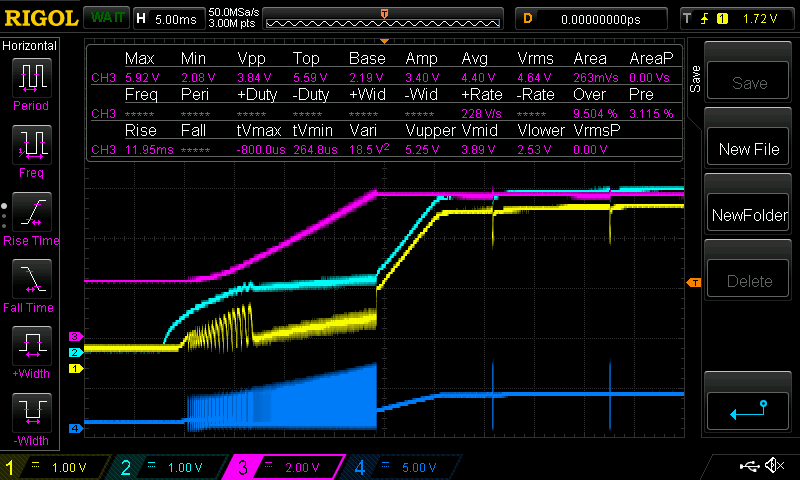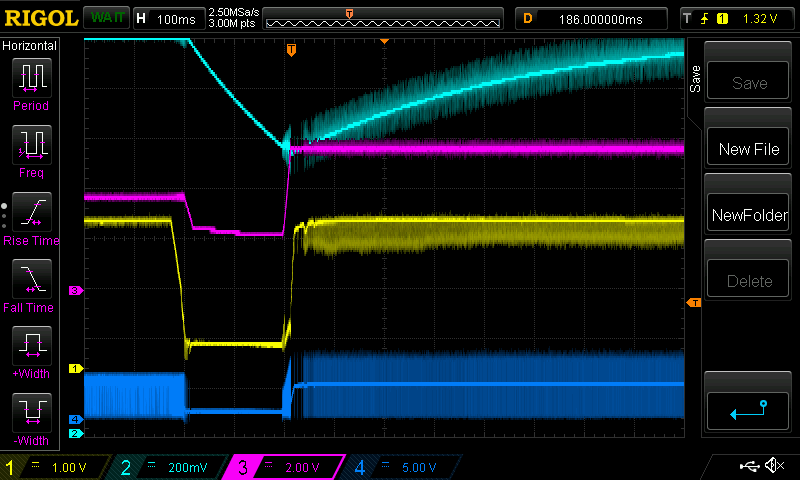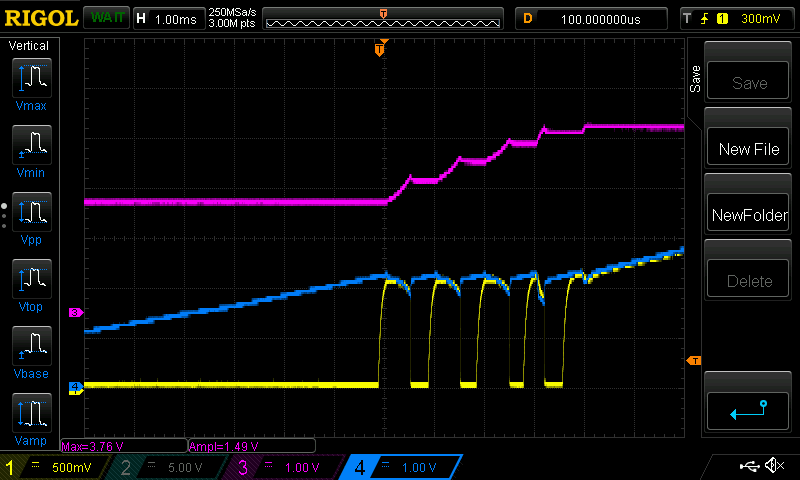Other Parts Discussed in Thread: TIDA-050010
Hi,
I have the exact same problem as a locked post, but it seems that the post never has a specific resolution? Could you please share the resolution with me? I am copying it here for posterity:
####################
Hello,
We are noticing a strange phenomenon with the TPS610995. Vin=3 Vout=3.6 fixed
- If we startup the device with the 3V bench power supply without a current limit, the output comes up to 3.6V just fine.
- If we startup the device with the 3V bench power supply current limited (200mA), the supply hits the limit and the device outputs less than 3.6V
- If we start increasing the current limit, the device output voltage will rise up to 3.6V. However the bench supply is still hitting current limit.
- If we increase the current limit further until it no longer hits the limit, the output voltage of the device reaches 5.6V. However the current flow drops dramatically at this point.
I'm not sure how it's possible with the internal feedback resistors for this device to ever output greater than 3.6V.
Is there something with this current limit process that is putting the chip into a weird state?
Let me know if there is any other pieces of data you need.
####################

Thanks,
Jeremy






